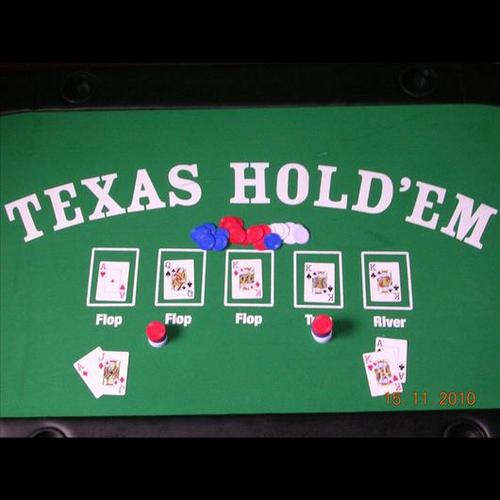Texas Hold’em Poker Tutorial
Are you ready to dive into the thrilling world of Texas Hold’em poker? Whether you’re a beginner or looking to sharpen your skills, this comprehensive guide will walk you through the ins and outs of this popular poker variant. From the basics of the game to advanced strategies, we’ve got you covered.
Understanding the Basics
Before you start playing Texas Hold’em, it’s essential to understand the basic rules and structure of the game. Here’s a quick rundown:

- Number of Players: Texas Hold’em is typically played with 2-10 players.
- Blinds: The game begins with two forced bets called the small blind and the big blind. These bets help create the pot and ensure action on each betting round.
- Dealing Cards: Each player is dealt two private cards (known as ‘hole cards’) face down.
- Betting Rounds: There are four betting rounds in Texas Hold’em: preflop, flop, turn, and river.
- Community Cards: After the preflop betting round, three community cards are dealt face up on the table. These cards can be used by all players.
- Final Betting Round: After the final betting round, players reveal their hands, and the best five-card hand wins the pot.
Hand Rankings
Understanding hand rankings is crucial for making informed decisions during the game. Here’s a list of the hands from highest to lowest:
- Royal Flush: The highest possible hand, consisting of the A, K, Q, J, and 10 of the same suit.
- Straight Flush: Five consecutive cards of the same suit.
- Four of a Kind: Four cards of the same rank.
- Full House: Three of a kind and a pair in the same hand.
- Flush: Any five cards of the same suit, but not in sequence.
- Straight: Five consecutive cards of different suits.
- Three of a Kind: Three cards of the same rank.
- Two Pair: Two different pairs in the same hand.
- One Pair: Two cards of the same rank.
- High Card: The highest card in your hand if you haven’t made any of the above hands.
Position and Bluffing
Position is a crucial factor in Texas Hold’em. It determines when you act in relation to your opponents. Here’s a brief overview:
- Early Position: The first two seats to the left of the big blind. You have limited information about your opponents’ hands.
- Middle Position: The next two seats to the left of early position. You have a better chance to gather information about your opponents’ hands.
- Late Position: The last two seats to the left of the dealer. You have the most information about your opponents’ hands and can make more informed decisions.
Bluffing is an essential skill in poker. It involves betting or raising with a weak hand to make your opponents fold. Here are a few tips for effective bluffing:
- Observe Your Opponents: Pay attention to their tendencies and betting patterns.
- Choose the Right Time: Bluff when you have a good read on your opponents and believe they are likely to fold.
- Be Consistent: Bluffing should be a part of your overall strategy, not a one-time move.
Bankroll Management
Bankroll management is crucial for long-term success in poker. Here are a few tips to help you manage your bankroll effectively:
- Play at Your Level: Choose stakes that match your skill level and bankroll.
- Set a Budget: Decide how much money you’re willing to lose and stick to it.
- Don’t Chase Loss
